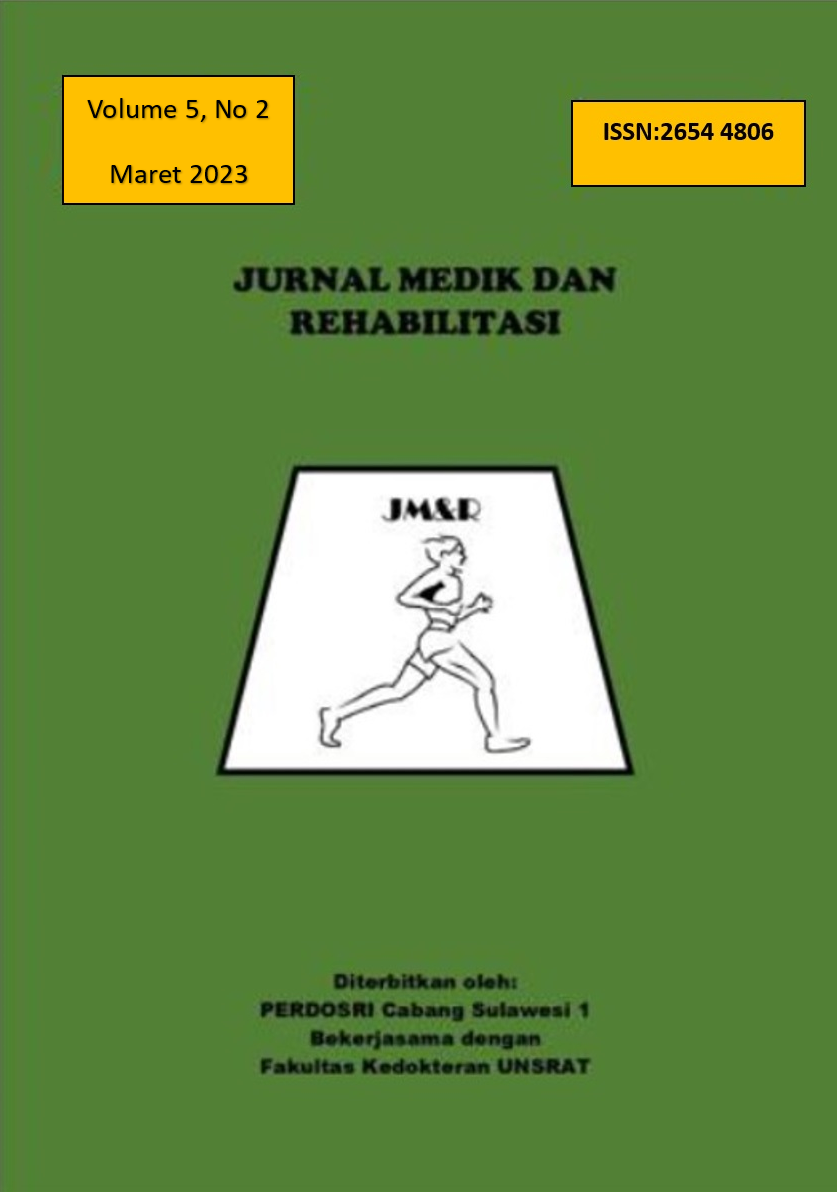MEDICAL REHABILITATION IN PATIENT WITH TOTAL KNEE ARTHROPLASTY DUE TO LEFT TIBIAL PLATEAU FRACTURE
Abstract
Tibial plateau fractures comprise 1% of all fractures. The incidence of tibial plateau fractures is 10.3 per 100,000 people annually. The mean age of patients incurring tibial plateau fractures is 52.6 years. The distribution of tibial plateau fractures is bimodal, with men under the age of 50 more likely to sustain this injury via high energy mechanisms and frequently associated with soft tissue injuries. Whilst women over the age of 70 more likely to have tibial plateau insufficiency fractures secondary to low energy falls. Overall, men more commonly sustain tibial plateau fractures than women. Tibial plateau fractures occur when varus or valgus stress is applied to the knee, coupled with axial loading. These injuries are often categorized using the Schatzker classification, which can be seen used to classify the fracture pattern and oftentimes dictate treatment. Type Ⅰ, Ⅱ and Ⅲ fractures involve the lateral plateau. Type Ⅳ fractures involve the medial plateau, while type Ⅴ describes bicondylar involvement. In type Ⅵ fractures, there is complete metadiaphyseal dissociation. Treatment of tibial plateau fractures must take into account patient age, comorbidities, bone stock, and fracture pattern. While there are various treatment options for displaced tibial plateau fractures, the standard of care is open reduction and internal fixation (ORIF). In physiologically young patients with higher demand and better bone quality, ORIF is the preferred method of treating these fractures. However, future total knee arthroplasty (TKA) is a consideration in these patients as post-traumatic osteoarthritis is a common long-term complication of tibial plateau fractures. In older, lower demand patients, ORIF is potentially less favorable for a variety of reasons, namely fixation failure and the need for delayed weight bearing. In some of these patients, TKA can be considered as primary mode of treatment. Primary total knee arthroplasty (TKA) may be of benefit in elderly patients with a combination of osteoporotic bone and metaphyseal comminution. Additional benefits to treating select patients with TKA compared with ORIF are the reduced rates of lower-extremity thrombosis, postoperative pneumonia, and postoperative deconditioning. This is largely due to the immediate stability of the knee and early mobilization made possible following TKA. In addition, these patients require shorter hospital stays and fewer revision surgeries. Postoperative rehabilitation following TKA facilitates patient recovery and improves quality of life. Rehabilitation after TKA focuses on recovery of knee range-of-motion (ROM), restoration of knee- and hip-muscle strength, development of functional independence, and the ability to participate in recreational activities.

